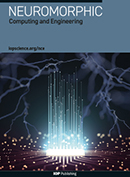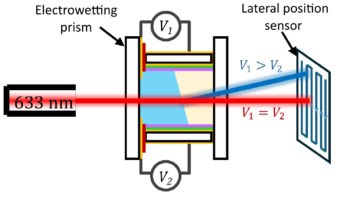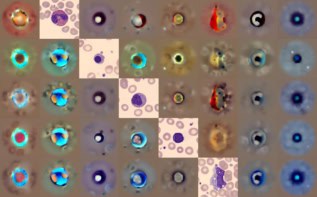Available to watch now, sponsored by the IOP Publishing journal, Neuromorphic Computing and Engineering
Hear leading experts debate the two main approaches to neuromorphic computing
Want to learn more on this subject?

Want to learn more on this subject?
There are two main approaches to what we consider neuromorphic computing. The first involves emulating biological neural processing systems through the physics of computation of computational substrates that have similar properties and constraints as real neural systems, with potential for denser structures and advantages in energy cost. The other simulates neural processing systems on scalable architectures that allow the simulation of large neural networks, with higher degree of abstraction, arbitrary precision, high resolution, and no constraints imposed by the physics of the computing medium.
Both may be required to advance the field, but is either approach ‘better’? Hosted by Neuromorphic Computing and Engineering, this webinar will see teams of leading experts in the field of neuromorphic computing argue the case for either approach, overseen by an impartial moderator.

Team emulation:
Elisa Donati. Elisa’s research interests aim at designing neuromorphic circuits that are ideally suited for interfacing with the nervous system and show how they can be used to build closed-loop hybrid artificial and biological neural processing systems. She is also involved in the development of neuromorphic hardware and software systems able to mimic the functions of biological brains to apply for medical and robotics applications.
Jennifer Hasler received her BSE and MS degrees in electrical engineering from Arizona State University in August 1991. She received her PhD in computation and neural systems from California Institute of Technology in February 1997. Jennifer is a professor at the Georgia Institute of Technology in the School of Electrical and Computer Engineering; Atlanta is the coldest climate in which she has lived. Jennifer founded the Integrated Computational Electronics (ICE) laboratory at Georgia Tech, a laboratory affiliated with the Laboratories for Neural Engineering. She is a member of Tau Beta P, Eta Kappa Nu, and the IEEE.
Team simulation:
Catherine (Katie) Schuman is an assistant professor in the Department of Electrical Engineering and Computer Science at the University of Tennessee (UT). She received her PhD in computer science from UT in 2015, where she completed her dissertation on the use of evolutionary algorithms to train spiking neural networks for neuromorphic systems. Katie previously served as a research scientist at Oak Ridge National Laboratory, where her research focused on algorithms and applications of neuromorphic systems. Katie co-leads the TENNLab Neuromorphic Computing Research Group at UT. She has written for more than 70 publications as well as seven patents in the field of neuromorphic computing. She received the Department of Energy Early Career Award in 2019. Katie is a senior member of the Association of Computing Machinery and the IEEE.
Emre Neftci received his MSc degree in physics from EPFL in Switzerland, and his PhD in 2010 at the Institute of Neuroinformatics at the University of Zurich and ETH Zurich. He is currently an institute director at the Jülich Research Centre and professor at RWTH Aachen. His current research explores the bridges between neuroscience and machine learning, with a focus on the theoretical and computational modelling of learning algorithms that are best suited to neuromorphic hardware and non-von Neumann computing architectures.
Discussion chair:
Giulia D’Angelo is currently a Marie Skłodowska-Curie postdoctoral fellow at the Czech Technical University in Prague, where she focuses on neuromorphic algorithms for active vision. She obtained a bachelor’s degree in biomedical engineering from the University of Genoa and a master’s degree in neuroengineering with honours. During her master’s, she developed a neuromorphic system for the egocentric representation of peripersonal visual space at King’s College London. She earned her PhD in neuromorphic algorithms at the University of Manchester, receiving the President’s Doctoral Scholar Award, in collaboration with the Event-Driven Perception for Robotics Laboratory at the Italian Institute of Technology. There, she proposed a biologically plausible model for event-driven, saliency-based visual attention. She was recently awarded the Marie Skłodowska-Curie Fellowship to explore sensorimotor contingency theories in the context of neuromorphic active vision algorithms.
About this journal

Neuromorphic Computing and Engineering is a multidisciplinary, open access journal publishing cutting-edge research on the design, development and application of artificial neural networks and systems from both a hardware and computational perspective.
Editor-in-chief: Giacomo Indiveri, University of Zurich, Switzerland



